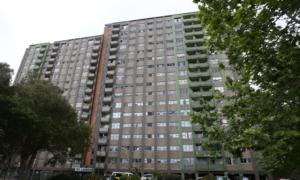Residents of New South Wales (NSW) could save up to $75,000 (US$48,000) per home if they built more properties in the inner city areas of Sydney than the outer suburbs.
Development Cost Savings
Most of the difference in cost relates to local traffic congestion as well as the development of new wastewater facilities, schools, and green space.For instance, the report said that while the NSW government needed to spend around $13,000 to build water and wastewater infrastructures for a new dwelling south of Sydney Harbour, the cost would surge to $42,000 in northern areas like Hornsby.
Similarly, the combined cost of extra primary and secondary school infrastructures for outer suburbs, such as Manly and Pittwater, could go up to $20,000 per new home compared to less than $10,000 in Fairfield.
NSW Productivity Commissioner Peter Achterstraat said the report highlighted the case for raising density limits in Sydney’s established areas.
“If we build homes where people want to live, near jobs and amenities, the productivity and lifestyle benefits will be enormous.
“It’s also fairer—key workers like nurses and teachers should be able to afford to live near the hospitals and schools where they work.”

The commissioner also said that Sydney’s eastern suburbs, north shore, inner city, and inner west had the most capacity and were the most cost-effective areas to build in.
He called for more housing in those areas to improve affordability, reduce infrastructure costs, and limit the burden on taxpayers.
The report showed that NSW would need 900,000 additional homes by 2041 to cater for its growing population, including 550,000 across Sydney.
NSW Government’s Response
NSW Planning Minister Paul Scully said the report confirmed that the state government’s current approach to housing was correct.NSW Premier Chris Minns and Housing Minister Rose Jackson had stated that NSW should opt for high-quality apartments and denser living like in other metropolitans such as New York, Paris, and London rather than expanding outward.
“It’s vital we look at different ways to deliver more homes, including focusing on inner city suburbs with existing infrastructure that can be scaled relatively quickly and easily.
“We need help to deliver housing that people can afford with a fairer distribution of housing in infill locations where people want to live and work, near jobs and services and where it costs considerably less to deliver the infrastructure needed to support those homes.”
While the NSW government is pushing for higher-density developments in Sydney CBD, it does not want to force it on local city councils.
The premier has recently stated that his government will not punish inner city councils resisting high-density housing despite already having the power to rezone areas.
“We don’t want this adversarial approach,” he said.
“We believe we can meet those targets without penalising anybody.”
The Epoch Times has reached out to Master Builders Australia for comment but has yet to receive a reply in time for publication.







